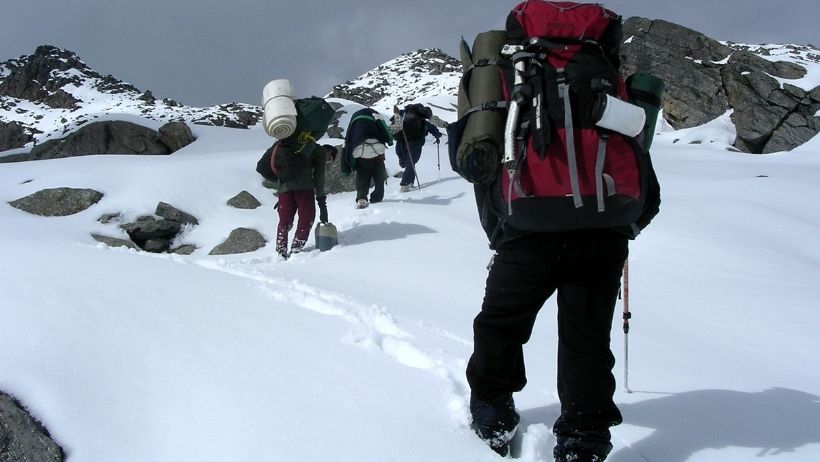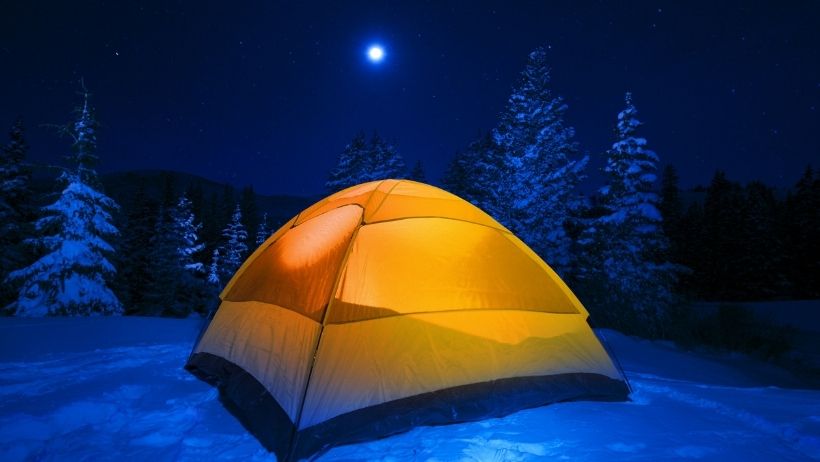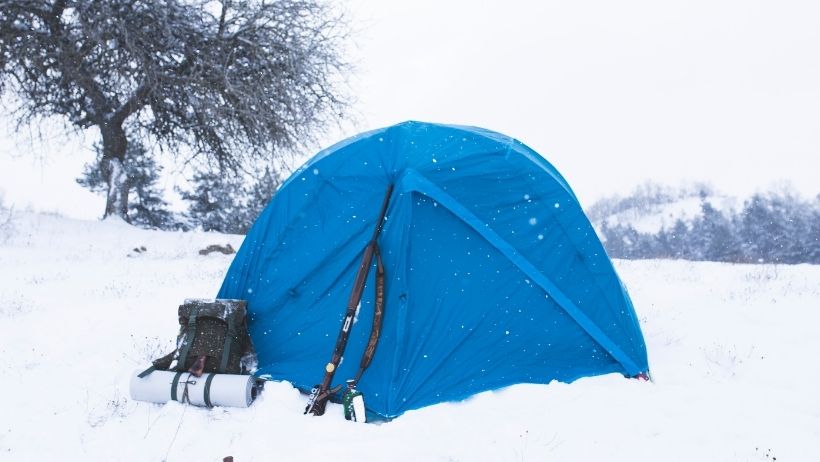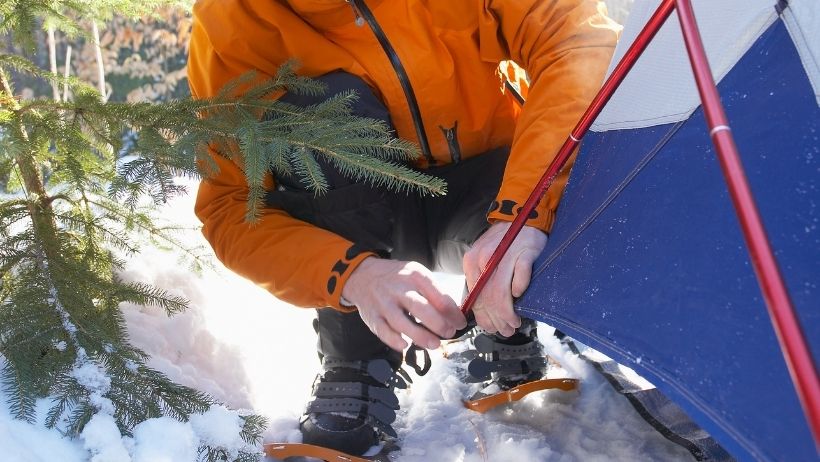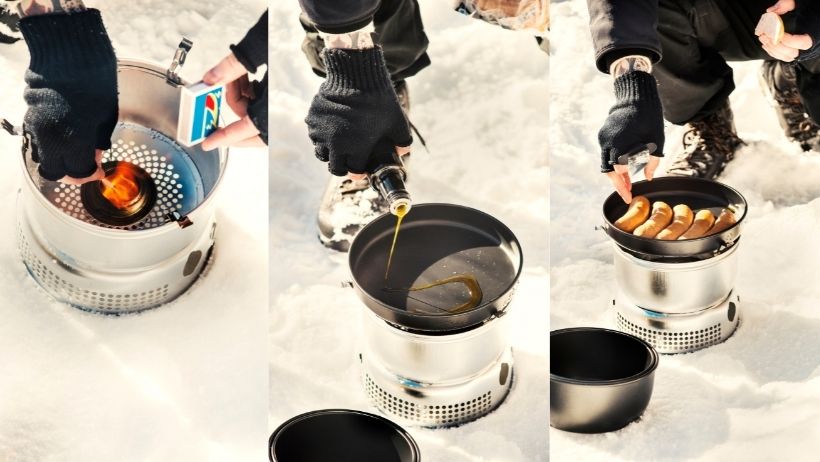Camping in Winter: Everything you need to know
Untouched snowy landscapes, absolute silence, and a sparkling starry sky – those who go camping in winter cannot stop being amazed. All you need for camping in winter is a clear, cold night and safe conditions. In addition, for camping in winter you need frost-proof camping equipment with a sleeping bag, thick sleeping mat, down jacket, and preferably a gas lantern. For unadulterated enjoyment of nature, you should set up your winter camp a few kilometers away from any town. You should avoid depressions and avalanche-prone slopes when camping in the snow. Ideal: hilltops with a clear view – and sun in the morning.
Which tent in winter?
You can use a weatherproof quality tent (which also offers good weather protection on summer tours) in winter as well. However, there are a few special criteria that must be met when camping in winter:
- Very important: the inner tent must not be made of a mosquito net. Otherwise, it can get extremely uncomfortable when the snow blows under the outer tent and gets into the inside of the tent through the mesh. In addition, the general rule is that you need more space with winter equipment than in summer: The inner tent should therefore be spacious. This is especially true for the awning, since – unlike in warm weather – you cook there most of the time.
- There are special pegs for use in snow, but equipment editor Boris Gnielka advises against them. On the one hand, they are heavy, and on the other hand, the tent can be securely fastened without them: by lashing the tent ropes to a snowshoe or bags filled with snow and then burying them 10 to 20 centimeters deep in the snow. Trample the snow over it well, and you get a fastening that no snow herring can top.
Set up the tent correctly in the snow
First of all, you should step flat on the place of your choice with snowshoes and a backpack – this is how the snow solidifies. In the case of a slight slope, straighten the surface with the shovel. Then set up the tent so that the entrance is on the leeward side. Then you dig the entrance area free so that you can get out of the tent unhindered at night. For tensioning, you use the pegs that you dig in across (20 cm deep), trekking poles, or snowshoes- but not the shovel, which remains in the apse so that you can free yourself from the tent after heavy snowfall.
Provide comfort inside the tent
Before you carry your luggage into the tent, dig a footwell in the apse if the snow depth is sufficient. It is used to sit comfortably, and luggage can also be stowed in it. Important: The pit must not protrude outwards – otherwise it will snow in!
Further equipment tips for winter camping
You are not in the Arctic on your first winter tent tour – but if you don’t want to torment yourself, we recommend the following for your first winter bivouac:
Sleeping mat and sleeping bag
A warm sleeping mat is almost more important than a warm sleeping bag because the coldest comes from the floor. For full foam mats, a thickness of at least two centimeters is recommended, self-inflating mats should be at least 3.5 centimeters thick and contain no perforated foam. The sleeping bag should cover a comfortable temperature range of down to -10 degrees Celsius (important: make sure that the manufacturer’s temperature specification relates to the comfort range and not to the extreme range!).
Clothing
Apart from seasonal outdoor clothing, the jacket must have a really warm insulation layer. A down jacket is best. Unsuitable: gore jackets. It is advisable to pack a pair of spare gloves. If you have to dismantle a tent with your bare fingers due to wet gloves, it is no fun. Snowshoes are essential for every winter hiker who does not move on cleared paths.
Gaslamp
To achieve a comfortable temperature of around 15 degrees Celsius in the tent, a gas lamp is strongly recommended. Make sure there is sufficient air supply in the tent!
Stove
In any case, a petrol stove should be part of the equipment for the winter tent tour. Gas cookers are less suitable when the temperature is below zero. As long as you don’t want to cook a three-course meal, 250 milliliters of gasoline per person and day is easily enough as fuel.
What also has to be in winter luggage
If there is a lot of fresh snow at night and to keep yourself happy, you should pack the following things:
- A snow shovel. You have to take these with you into the tent.
- A thermos. Hot tea in between can work wonders, and even in the evening in the tent, you don’t necessarily want to turn the stove on again for a second cup.
- An additional bar of chocolate. According to Boris Gnielka, on winter weekend tours in the low mountain range, the body does not need more food than in summer, but the energy consumption is still high and you want to stay in a good mood. A chocolate bar can also be very motivating before you get up in the morning.
- A good book, possibly also a mini-sized game. After all, you spend significantly more time in a tent than in summer.
Tips for planning and choosing the perfect destination
Mountains and snow – ski slopes are often not far. You should avoid them! A few basic rules for choosing a winter hiking destination:
1. It is best to take your first tent tour in the snow in an area that you already know from summer tours. You will be amazed how many new things you still discover.
2. Avoid ski areas! Snow cannons and snow caterpillars often make enormous noise late into the night, and many ski slopes are illuminated at night.
3. Plan significantly shorter routes than for tours in other seasons. Firstly, the days are much shorter now, so you don’t have that much time, and secondly, you are much slower in the snow than usual. If you move cross-country and uphill, you often don’t even make a kilometer an hour!
4. Avoid areas with avalanche danger. As a beginner in winter camping, you shouldn’t be out and about in alpine regions anyway.
5. Listen to the weather report before the winter tour. Snow and storms can also be extremely uncomfortable in low mountain ranges, and it may be advisable to postpone the tour – so that your first tent tour in the snow does not remain your last!
